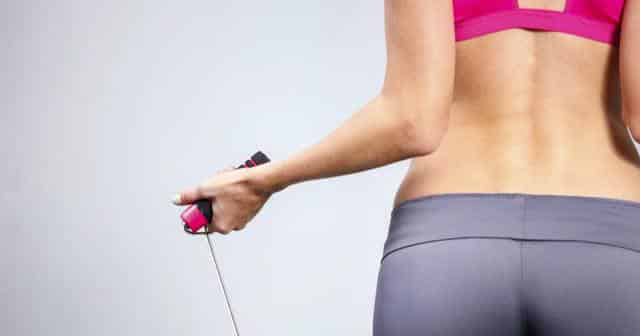
Pain in the buttocks (butt pain)
Pain in the ass and buttock pain can affect anyone. Buttock pain and pain in the buttock can be caused by muscles (piriformis syndrome and myalgias / myosis in the muscles of the seat / buttock, hip and back), nerves (sciatica and / or prolapse of the lower back) and joints (pelvic lock, hip stiffness and facet joints in the back).
- When sitting hurts
Such pains and ailments can go beyond the everyday function and result in reduced quality of lifet. Here you will find good information that will enable you to understand more about why you get pain in the butt and what you can do about it. We also go through effective training exercises, good self-measures (such as ergonomic tailbone cushion) and documented treatment methods. The purpose of the article is to help you get rid of your ailments.
- Do not walk with pain for a long time
Our clinicians at our clinic departments belonging to the Vondtklinikkene offer thorough examination, modern treatment and effective rehabilitation therapy for acute and chronic buttock pain. Feel free to contact us on Facebook or directly via one of our clinic departments if you have any questions about your pain or ailments.
- Written by: The pain clinics - Interdisciplinary Health Dept. Eidsvoll Sundet og department Lambertseter (Oslo) [See complete clinic overview here – link opens in new window]
- Last updated: 14.10.2022
Also, remember to watch these exercise videos (shown below) that can help you overcome your pain.
VIDEO: 5 Exercises against Sciatica and Sciatica
Irritation of the sciatic nerve inside the seat is a very common cause of pain in the seat muscles. Here are five exercises that can help you loosen up gluteal muscle tension, relieve the sciatic nerve and provide long-lasting improvement. Click below to see the training program.
You can see another training program towards the end of the article.
- Dear back end has many names
We have chosen to use the popular term buttock / buttock in this article, as that is what the majority search for for pain in this area (and not more advanced terms such as glutes or musculus gluteus maximus).
In this article you will learn more about:
1. Causes of butt pain
+ Common causes
+ Rare and serious causes
2. Symptoms of pain in the ass
3. Anatomy: The muscles, nerves and joints of the seat
4. Diagnostic examination of seat pain
+ Functional examination
+ Imaging examination (if indicated)
5. Treatment of pain in the buttocks
+ Physiotherapy
+ Modern chiropractic
+ Pressure wave treatment
6. Self-measures against seat pain
+ Suggestions for self-treatment and prevention
7. Training and exercises against pain in the ass (including video)
+ Exercise program for you with seat pain when sitting
8. Questions? Contact Us!
1. Reasons: Why does my butt hurt?

Tense muscles and stiff joints are usually major components
In case of long-term improper loading, nerve tension can occur (irritation to the nerves in the seat)
Some of the most common causes are overload, trauma, poor sitting posture, wear and tear, muscle strain (especially the gluteal muscles) and mechanical dysfunction in nearby joints (for example reduced mobility in the pelvic joints and lower back).
As mentioned earlier, pain in the buttock and buttock pain can be both painful and distressing - uncertainty about what is causing it can also affect your mood and affect you psychologically. Pain in the seat can be caused by muscle dysfunction / myalgia, sciatic nerve irritation in the back or seat (e.g. due to prolapse, piriformis syndrome, tight gluteal muscles, pelvic joint restriction or narrow nerve conditions / spinal stenosis), as well as joint locking in the pelvis, lower back or hip.
- Documented help against seat pain
Fortunately, there is good help to be had in the form of a holistic approach with self-measures, rehabilitation exercises and physical treatment. You can learn more about what measures you can take yourself, and how skilled clinicians can help you with your pain presentation, further down in the article.
Some common causes and possible diagnoses for pain in the butt are:
Osteoarthritis (The pain depends on which joints are affected, but lateral seat pain may be due osteoarthritis of the hip)
pelvic locker (pelvic lock with associated myalgia can cause pelvic pain and in the seat, as well as further to the hip)
Gluteal myalgia (pain in the seat, against the hip, lower back or hip)
Hamstrings myalgia / muscle damage (causing pain on the back of the thigh and against the seat, depending on the area that is damaged)
Iliopsoas bursitis / mucus inflammation (often results in reddish swelling in the area, night pain and extreme pressure)
Iliopsoas / hip flexors myalgia (Muscular dysfunction in the iliopsoas will often cause pain in the upper thigh, the front, the groin and the seat)
Iliosacral joint locking (locking in the iliosacral joint can cause pain in the seat and lower back)
Ischiofemoral impingement syndrome (most common in women, preferably athletes - involves a pinch of the quadratus femoris)
Sciatica / sciatica (Depending on how the nerve is affected, it can cause referred pain against the buttock, thigh, knee, leg and foot)
Joint locker / dysfunction in the pelvis, hip or lower back
Lumbar prolapse (nerve irritation / disc injury in the L3, L4 or L5 nerve root can cause referred pain in the buttocks)
Piriformis syndrome (may give rise to false sciatica)
Crocodiles and gluteal endinopathy
Tuberositis may cause pain syndrome
Less common causes of buttock pain:
Fracture and fracture
Infection (often with high CRP and fever)
Cancer
2. Symptoms of pain in the ass
Depending on the cause, buttock pain symptoms can vary. A number of muscles can cause pain deep in the seat and this often occurs in connection with reduced function in the hip joint or pelvic joint. False sciatica or nerve irritation can give you more sharp pain with associated radiation / tingling down the leg and thigh.
Some possible reported symptoms and pain presentations for pain in the butt
- Deafness in the buttocks
- Burning in the ass
- Deep pain in the buttocks
- Electric shock in the buttocks
- Hogging in the ass
- Knot in the ass
- Cramps in the buttocks
- Joint pain in the buttocks
- Ant in the ass
- Murring in the ass
- Muscle pain in the buttocks
- Nerve pain in the buttocks
- Num in the ass
- Shake your ass
- Skewed in the ass
- Worn in the ass
- Stitching in the ass
- Stole in the ass
- Sores in the buttocks
- Pain in the buttocks
- Sore buttocks
“As you can tell from the list above, buttock pain can present in a number of different ways. Precisely for this reason, it is important to have a competent functional examination to map where your pain originates from."
3. Anatomy of the seat
Here we take a closer look at how the seat and bum are anatomically built. And sees both front, left, right and of course the back. In the article you will learn more about the muscles, tendons and joints in the seat region.
Where's the butt?
Didn't they teach you that at school? Well, the seat is also called the gluteal region or in good Norwegian; rumpa. Inside the seat we find the iliac crest, hip, sacrum, coccyx, sciatica and pelvis - with associated muscles and muscle attachments.
Anterior part of the buttock muscles
In the picture we take special note iliopsoas (hip flexor) which can cause myalgia pain to the front of the buttocks, to the groin. On the outside of the seat in the attachment to the hip ball we also see TFL (tensor fasciae latae) which can pain on the outside of the seat against the hip and outside of the upper the thigh.
Posterior part of the buttock muscles
This is where we find most muscular causes of butt pain. Especially the trio gluteus maximus, gluteus medius og gluteus minimus is often responsible for pain in the buttocks - gluteus medius and minimus can actually both contribute to so-called false sciatica / sciatica with referenced pain down the leg and leg. piriformis is also a muscle that is often involved in false sciatica – and has had the dubious honor of having a false sciatica syndrome named after it, namely piriformis syndrome. The piriformis is the muscle closest to the sciatic nerve, and thus muscle dysfunction here can cause sciatica symptoms.
As we note from the pictures above, the body's anatomy is both complex and fantastic. This, in turn, means that we must focus holistically on why the pain occurred, only then can effective treatment be provided. It is also important to remember that it never does 'just muscular', there will always be a joint component, an error in movement patterns and behavior that also forms part of the problem. They only work together as a unit.
Nerves in the buttocks
As you can see from the picture, there are a number of nerves in the buttocks - these can become irritated or dysfunctional to varying degrees due to poor function in nearby muscles and joints. It is especially the sciatic nerve that can be painful with too tight gluteal muscles and / or joint restrictions in the pelvis and lower back.
Anatomy of the pelvis
Pelvic anatomy - Photo Wikimedia
What we call the pelvis, also known as the pelvis, consists of three joints; pubic symphysis, as well as two iliosacral joints (often called pelvic joints). These are supported by very strong ligaments, which give the pelvis a high load capacity. In the SPD (symphysis pubic dysfunction) report from 2004, obstetrician Malcolm Griffiths writes that none of these three joints can move independently of the other two - in other words, movement in one of the joints will always result in a counter movement from the other two joints.
4. Diagnostic examination of pain in the buttocks
Clinical and functional non-examination
Imaging examination (if medically indicated)
Clinical and functional examination
During an initial examination at one of our clinic departments, one of our publicly authorized clinicians will start with an anamnesis. This involves taking a history with a review of the patient's symptoms and pain picture, as well as other relevant questions about the history of the disease, cause of onset, previous injuries and duration of pain.
- Functional examination of muscles, joints, tendons and nerves
The clinician then proceeds to examine the function and mobility of your muscles, tendons, connective tissue, joints and nerves. The clinical findings and mapping of pain-sensitive areas will facilitate establishing a clinical diagnosis. Usually, you will be able to make a diagnosis without the help of imaging, but if it is medically indicated, our therapists have the right to refer to such examinations.
Imaging examination of buttock pain
In certain patient cases, diagnostic imaging (for example, X-ray, MRI, CT or ultrasound) may be deemed necessary to map the problem in more detail. The majority of cases will manage without such an imaging investigation, but it may be relevant if disc herniation, fractures, tendon damage and significant osteoarthritis are suspected. In the next part of the article, we show how the buttocks / pelvis can look in the different image modalities.
X-ray of the buttocks and pelvis (viewed from the front - also called AP)
X-Ray Description: In the X-ray above, you see a female pelvis (AP view, seen from the front), consisting of the sacrum, ilium, iliosacral joint, coccyx, symphysis and more.
MRI examination of the buttocks and pelvis
MR description: In the MR image / examination above you see a female pelvis in a so-called coronal cross-section. In MRI examination, versus X-ray, soft tissue structures are also visualized in a good way.
CT image of the ass
Here we see a CT examination of the buttocks, in so-called cross-section. The picture shows the gluteus medius and maximus. A CT examination consists of a series of X-ray images that are put together to form a detailed image - quite similar to how an MRI is examined. The main difference is that a CT examination will cause X-ray radiation.
Diagnostic ultrasound of the buttock (above right tuberositas majus)
Here we see a diagnostic ultrasound examination of the musculature in the buttocks - specifically the outer part of the hip. The examination shows the gluteus medius and gluteus maximus where they attach to the hip.
5. Treatment of seat pain and pain in the butt

A thorough examination facilitates the correct treatment method
Evidence-based treatment approach for best results
Physical treatment methods are combined with rehabilitation therapy
At the Vondtklinikkene, as a patient, you should always feel confident that you are receiving evidence-based and individually tailored treatment. Our interdisciplinary clinicians always aim to be among the top professional elite when it comes to the investigation, treatment and rehabilitation of pain and injuries in muscles, tendons, ligaments, connective tissue, joints and nerves.
Choice of treatment methods is based on the functional examination
Naturally enough, it is the clinical examination that facilitates the clinician's choice of treatment techniques. Usually, with pain in the butt, it is often a combination of reduced functionality in muscles, tendons, nerves and joints. Our clinicians will therefore be happy to use one or more of the following treatment methods:
Physiotherapy
Intramuscular acupuncture (can be useful for deep tension in the gluteal muscles)
Modern chiropractic
Muscular treatment (massage and muscle knot treatment)
Therapeutic laser therapy
Traction Treatment
Shockwave Therapy
The main aim of the treatment is to normalize function, reduce pain, stimulate improved joint mobility and break down damaged tissue in muscles and tendons. At the Vondtklinikken, we always combine treatment with guidance in rehabilitation exercises - to provide the basis for the best possible and long-lasting results.
Evidence-based and multidisciplinary approach
Our clinicians are always keen to keep up to date with the latest research and further education. Therefore, you will always be able to expect that our treatment setups are based on modern research with a knowledge-based approach.
List of forms of treatment (both very alternative and evidence-based):
- acupressure
- Acupuncture
- aromatherapy
- behavioral therapy
- Atlas Correction
- Ayurvedic medicine
- Bioelectromagnetic therapy
- blockade Treatment
- Soft tissue work
- Bowen Treatment
- Coxtherapy
- Electrotherapy
- Ergonomics
- Dietology
- Reflexology
- Physiotherapy
- gonstead
- Healing
- home Practice
- Homeopathy
- Hydrotherapy
- hypnotherapy
- Infrared light therapy
- insoles
- Intramuscular needle therapy
- Ice therapy
- remedy
- kinesiology
- Kinesiotape
- chiropractic
- Cognitive processing
- crystal Therapy
- contrast Treatment
- Cupping
- Cold Treatment
- Laser
- Joint Correction
- Joint Mobilization
- Medical treatment
- Lymphatic drainage
- Light Therapy
- magnet Treatment
- manual Therapy
- Meditation
- Muscle Relaxing Medications
- Muscle knot treatment
- Myofascial technique
- Naprapathy
- Naturopathy
- Neurological rehabilitation training
- qigong
- Osteopathy
- breathing
- reflexology
- Shockwave Therapy
- Foam roll / foam roll
- Pain medication
- Spinology
- Sports support
- Stretch bench
- Power Management
- sole Customization
- Thought Field Therapy
- TENS
- Thai Massage
- Traction
- Exercise
- Trigger point therapy
- Shockwave Therapy
- Dry needle
- stretching
- Vacuum Treatment
- heat treatment
- Hot water therapy
- Yoga
- Exercises
As you understand from the list above, there is a whole range of both undocumented alternative forms of treatment, but also evidence-based treatment techniques. Our advice is to stick to the use of health professions with protected titles (chiropractor, doctor and physiotherapist), as you know that they have had to document their education and competence before the health authorities, and that they are covered by NPE insurance.
6. Self-measures and prevention of buttock pain
Several of our patients naturally want to learn more about effective self-measures that can relieve and prevent buttock pain.
For this type of problem, we usually have three main recommendations. The first, and perhaps easiest to use, is the use of coccyx in everyday life - and especially in situations where you know you will be sitting for a while. In addition to this, we recommend relaxation on acupressure mat (15 minutes daily can give good results) and rolling on trigger point ball (aimed at muscle knots in the seat and upper thigh).
Ergonomic tip: Coccyx cushion (link opens in new window)
In our modern age, sitting on your bum often involves a larger proportion of everyday life - and often in front of the computer. Over time, this could lead to overloading of central parts of the seat - which in turn can result in both pain and nerve irritation. This is precisely why it is so important to use ergonomic measures - and use them coccyx, which provides relief, is therefore a very popular self-measure among many. Press the image or here to read more about it.
7. Training and exercises against pain in the ass
The main purpose of training exercises, both strength exercises and stretching exercises, is to improve the function of the buttock muscles and reduce any pain-sensitive areas or nerve irritation. The program below shows chiropractor Alexander Andorff came up with a training program consisting of seven exercises.
- Effective against pain in both the coccyx and seat
The program is dedicated to countering pain in the coccyx and seat. In several of the exercises it is used minibands to get the best possible training load on the right muscles (but the exercises can also be done without this). We recommend that the exercises are performed 2-3 times a week for 12-16 weeks.
VIDEO: 7 Exercises for Pain in the Tailbone and Seat
Become part of the family of our family! Feel free to subscribe for free on our Youtube channel for more free training programs and health knowledge.
8. Pain clinics: Contact us

We offer modern assessment, treatment and rehabilitation training for pain in the seat.
Feel free to contact us via one of our clinic departments (the clinic overview opens in a new window) or on vår Facebook-side (Vondtklinikkenne - Health and Training) if you have any questions. For appointment booking, we have XNUMX-hour online booking at the various clinics so that you can find the consultation time that suits you best. You are of course also welcome to call us during the clinics' opening hours. We have interdisciplinary departments in, among other places, Oslo (incl Lambert seats) and Viken (Raw wood og Eidsvoll). Our skilled therapists look forward to hearing from you.
Sources and references:
- Barton et al (2013). Gluteal muscle activity and patellofemoral pain syndrome: a systematic review. Br J Sports Med. 2013 Mar; 47 (4): 207-14. doi: 10.1136 / bjsports-2012-090953. Epub 2012 Sep 3.
- Cox et al (2012). Chiropractic management of a patient with lumbar spine pain due to synovial cyst: a case report. J Chiropr Med. 2012 Mar; 11 (1): 7–15.
- Pavkovich et al (2015). EFFECTIVENESS OF DRY NEEDLING, STRETCHING, AND STRENGTHENING TO REDUCE PAIN AND IMPROVE FUNCTION IN SUBJECTS WITH CHRONIC LATERAL HIP AND THIGH PAIN: A RETROSPECTIVE CASE SERIES. Int J Sports Phys Ther. 2015 Aug; 10 (4): 540–551.
- Kalichman et al (2010). Dry Needling in the Management of Musculoskeletal Pain. J Am Board Fam MedSeptember-October 2010. (Journal of the American Board of Family Medicine)
- Images: Creative Commons 2.0, Wikimedia, WikiFoundy, Ultrasoundpaedia, LiveStrong
Frequently Asked Questions About Pain In The Ass
In the list below, we present a number of the questions we have received about pain in the seat.
I have pain in the upper part of the bone in my butt. What could be the cause?
Answer: It sounds like what you mean is PSIS - that is, part of the pelvic joint. This may mean that the cause is pelvic lock, which often occurs in combination with gluteal myalgias / myoses.
Do you have nerves in the seat / butt?
Yes, you have. There is actually a rich network of nerves in the seat - but it is especially the sciatic nerve that controls the show there. Thanks to your question, we have now added an illustration that shows the nerves in the seat. You will find the picture further up in the article.
Has action and numbness in the butt and forward towards the step. What could it be?
First of all, it is important to make sure that this is not a classic symptom of Cauda Equina Syndrome (CES) - namely 'breech paresthesia'. This means that you have reduced sensation in the area around the anal sphincter and in the area towards the crotch. If, in addition to this, you have nerve pain down the legs, urinary retention (difficulty or almost impossible to start urinating) and lack of sphincter control (cannot hold stool). If you have pain and numbness in this area between the seat and the crotch, we strongly recommend that you contact a doctor or clinic immediately for further investigation.
Has pain in the buttocks muscles. What butt muscles can it be due to?
You have a number of muscles in the seat, or buttocks as you say, and these, like other muscles, can develop poor function and general condition. When a muscle becomes overactive, sore and tight, this is called a myalgia or muscle knot. Some of the muscles that can hurt in the seat are gluteus maximus, gluteus medius, gluteus minimus and piriformis.
Can a foam roller help my butt?
Answer: Yes, a foam roller or trigger point balls can help you to some extent, but if you have a problem with the seat - and especially if it is long-lasting - we recommend that you contact a clinician to have them investigated. Foam rollers and trigger point balls are often also used against the outside of the thigh, against the iliotibial band and tensor fascia latae - which can take some pressure off the seat and hip.
Why do you get pain in the butt?
Answer: Pain is the body's way of saying that something is wrong. Thus, pain signals must be interpreted as a form of dysfunction in the area involved, which should be investigated and further improved with appropriate treatment and training. Causes of pain in the buttock can be due to sudden improper loading or gradual improper loading over time, which can lead to increased muscle tension, joint stiffness, nerve irritation and, if things have gone far enough, discogenic rashes (nerve irritation / nerve pain due to disc disease in the lower back, so-called lumbar prolapse with affection towards the L3, L4 or L5 nerve root).
What should be done with a sore butt full of muscle knots?
Reply: muscle knots has most likely arisen due to an incorrect balance in the muscles or improper loading over time. There may also be associated muscle tension around joint locking in the nearby lumbar, hip and pelvic joints. In the first instance, you should receive qualified treatment, and then receive specific exercises and stretching so that it does not become a recurring problem later in life.

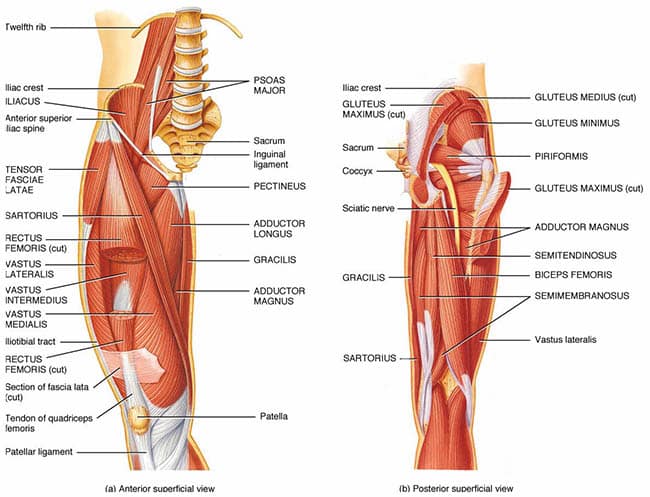
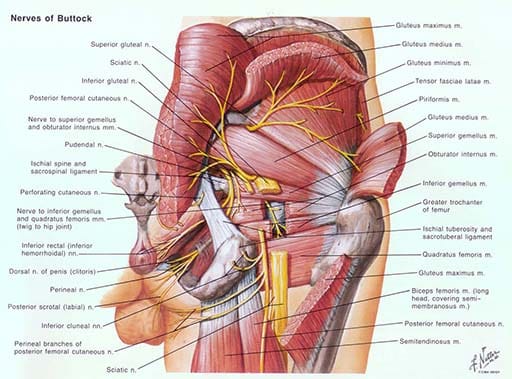
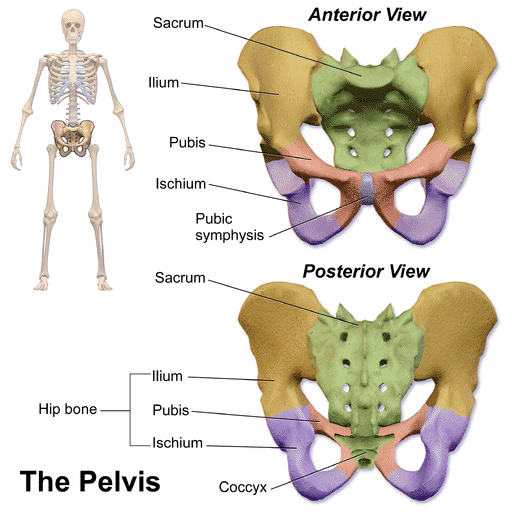
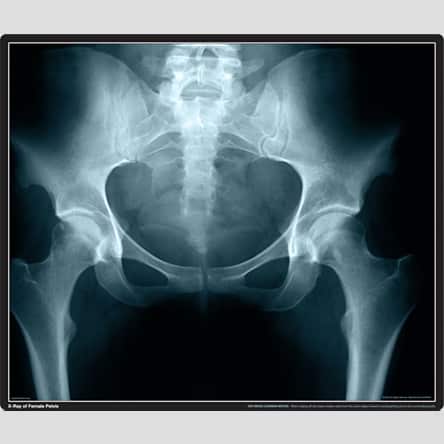
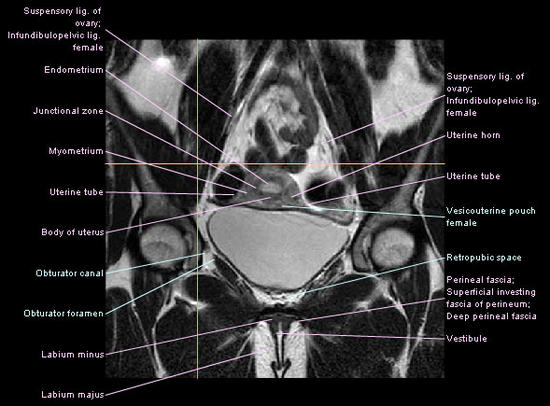
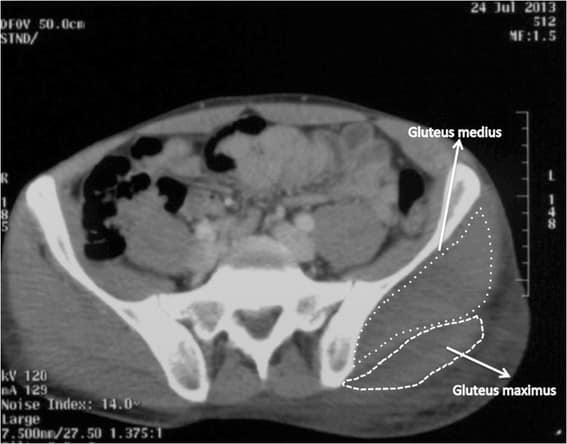
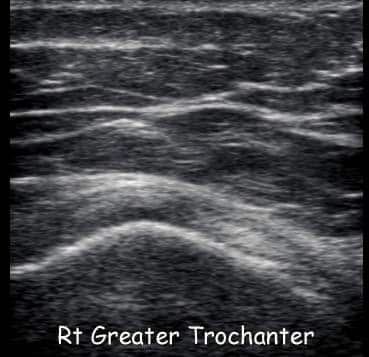

Hi, have received an answer to MRI and have been told that I have prolapse in L4 / L5. I also have pain in my buttocks / pelvis and burning in the abdomen / rectum has a horrible feeling when I walk that my legs do not carry me. It's been 5 weeks since I was told I had this.
Hi Berit, this does not sound good. With those symptoms, we ask that you receive a clinical examination to assess CES (Cauda Equina Syndrome). Contact your doctor tomorrow.
Have a question related to some ailments that occurred about 3 weeks ago. Then felt a slight pain for a while (minutes) like a line in the middle of the right seat / pelvis. In the following days I got tingling / almost like the feeling that the seat and further down in the foot "fell asleep" and occasionally slight pain. The tingling / pain varies in intensity from day to day, and comes fairly quickly after movement in the morning. Maybe I feel it best when I'm in the car. Feels little / nothing at night. In recent days, it has decreased somewhat down the leg but is more in the seat / lower back / partial tailbone. But feel it moves a little. Was to the doctor last week who checked sensitivity in the skin and strength in the legs, all fine. Did not feel anything on the lower back / seat. It must be mentioned that I have walked a lot on slopes with a pram and sat a lot on the floor in recent months .. possibly with bad positions occasionally if it can have anything to say. Movement in the pelvis / legs otherwise feels normal. The tingling / pain is more annoying than painful. But afraid of what this might be for something? Have also periodically been bothered with a little stomach pain on this side, and when the tingling is going on it is difficult to know if it may be related to this. Do you have any thoughts? How long can you go with this before you possibly do anything more?
Hi Mette,
When you have now been doing this for 3 weeks and it persists in the way it does, then we recommend contacting a physiotherapist or chiropractor to get examined for biomechanical findings.
Based on what you write, it may seem as if it is piriformis syndrome / sciatica (ie nerve irritation caused by the deep gluteal muscle piriformis), and possibly also some pelvic joint restriction on the same side (in which case there will be quite pressure soreness over the "ball" on the hip comb towards the lower back).